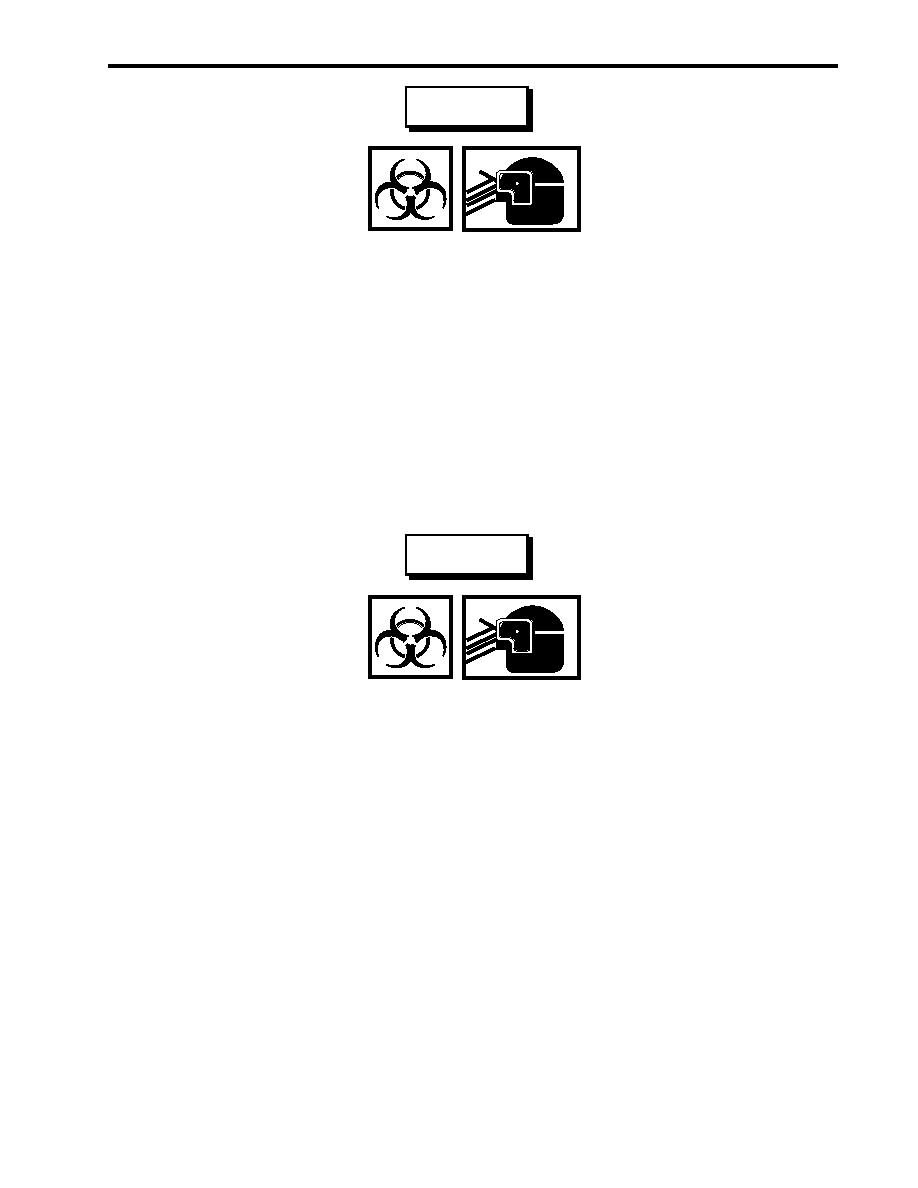
TM 55-1925-284-14&P
0031 00
WARNING
Sewage is a common mode of transmission for parasitic organisms that may
have the capability of causing communicable diseases. After coming in contact
with sewage or contaminated equipment, be sure to clean yourself with a disin-
fectant soap. Avoid sewage contact with skin abrasions, punctures, cuts, and
other open wounds. Wipe up and clean any spills and/or contaminated equip-
ment using a disinfectant soap.
17. Loosen the wet well discharge coupling (figure 2, item 8) and allow any effluent to drain into the suitable drain
pan.
18. Remove the pipe (figure 2, item 10) from the wet well (figure 2, item 7) and the wet well discharge coupling
(figure 2, item 8).
19. Place the suitable drain pan under the wet well drain to holding tank coupling (figure 2, item 11).
WARNING
Sewage is a common mode of transmission for parasitic organisms that may
have the capability of causing communicable diseases. After coming in contact
with sewage or contaminated equipment, be sure to clean yourself with a disin-
fectant soap. Avoid sewage contact with skin abrasions, punctures, cuts, and
other open wounds. Wipe up and clean any spills and/or contaminated equip-
ment using a disinfectant soap.
20. Loosen the wet well drain to holding tank coupling (figure 2, item 11) and allow any effluent to drain into the
suitable drain pan.
21. Remove the pipe (figure 2, item 12) from wet well drain to holding tank coupling (figure 2, item 11) and the wet
well (figure 2, item 7).
22. Remove the four nuts (figure 2, item 13), the four lockwashers (figure 1, item 14), and the four bolts (figure 2,
item 15) from the wet well (figure 2, item 7). Discard the lockwashers.
23. Remove the wet well (figure 2, item 7) from its foundation.
0031 00-5

